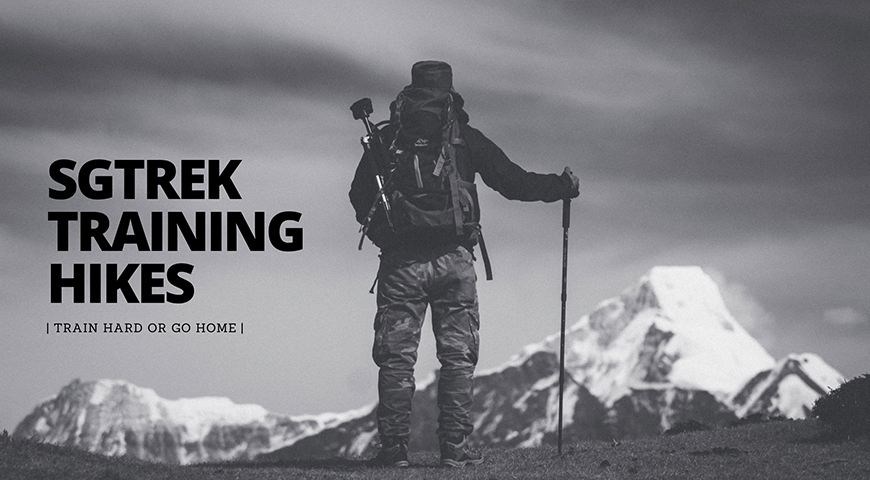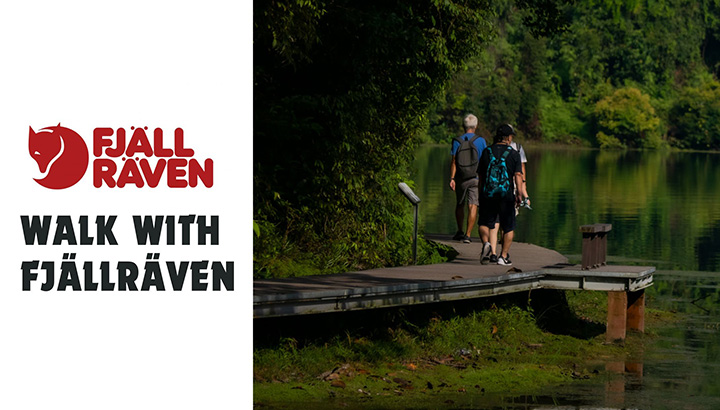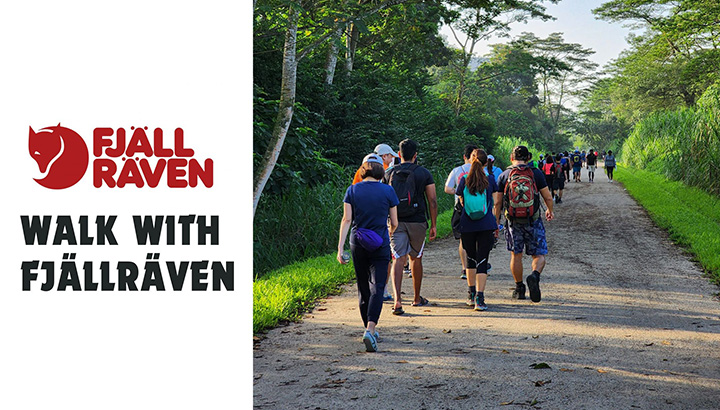
Fairy Meadows, Named by German climbers (German Märchenwiese, ″fairy tale meadows″) and locally known as Joot, is a grassland near one of the base camp sites of the Nanga Parbat, located in Diamer District, Gilgit-Baltistan. At an altitude of about 3,300 meters above the sea level, it serves as the launching point for trekkers summiting on the Raikot face of the Nanga Parbat. In 1995, the Government of Pakistan declared Fairy Meadows a National Park.
Fairy Meadow is lush green plateau situated in the foot gin of Nanga Parbat at the Western edge of the Himalayan Range. The name Fairy Meadows is part of the legend that Fairies have their heaven on this lush green plateau. This legendry name Fairy Meadows is everlasting gift of the western tourist to the local people. Fairy Meadow offers superb views of the Nanga Parbat (8,125 m) the highest mountain in Pakistan in Himalayas. (9th highest in the world)
COLORS OF HUNZA AUTUMN
The most exiting season in the Hunza Pakistan is the autumn, at the end of the summer season in September the orchards start changing color like a bride Groom with colorful dress of her wading day, these fantastic changes brings a glorious Trans fusion into human body, which gives happiness and pleasure. In October it offers a picture seek view among the high mountain peaks of 7000 to 7800m, and above from the snow line to the water channel lies the colorful rocks which has a sharp ridges Nallahs Maize millet vegetables sunflower, waterfalls, lakes, Duck shooting possibility, enjoy the landscape with the Natural beauty the God Given Gift to human creatures. The areas are abounding in colorful flowers along with gushing streams, roaring waterfalls, particularly in Hunza. One can find pink, white, red, yellow, blue flowers, dancing, everywhere in the northern areas during autumn season. Autumn in Northern Areas of Pakistan is something to behold. This is the time of year when the trees of poplar, apricot, mulberry, peach, apple and plum burst forth into a riot of color with hues of orange, rust and red. The clear and bracing weather offers the best view of the surrounding mountains.
EVENT DURATION: 12D11N
EVENT DATE: 04Sep-15Sep2020
EVENT COSTING:
- 09Pax and Above: SGD1700/Pax
- 04-08Pax: SGD1900/Pax
*Single Supplement: SGD350/Pax additional
Itinerary Highlights:
- Day-01 Welcome at Islamabad
- Day-02 Drive from Islamabad to Chilas
- Day-03 Chilas to Tato &Fairy Meadows
- Day-04 Excursion to Nanga Parbat BC
- Day-05 Fairy Meadows to Karimabad
- Day-06 Altit-Baltit Forts
- Day-07 Hopper & Duiker Valley
- Day-08 Drive from Duiker to Gulmit & Passu
- Day-09 Drive to Khunjerab Pass & Karimabad
- Day-10 Drive from Karimabad to Naran 355 km
- Day-11 Drive from Naran to Islamabad 239 km
- Day-12 Fly Back
DETAILED ITINERARY:
Day-01 Welcome at Islamabad
Welcome at Islamabad airport, and transfer to hotel.
Afternoon proceed for city tour of Islamabad and Rawalpindi, which includes famous Faisal Mosque, Shakar Parian, Pakistan monument, DamenKoh, Lok, Versa, and Museum.
Islamabad is the capital of Pakistan and the ninth largest city in the country. Located within the Islamabad Capital Territory (ICT), the population of the city has grown from 100,000 in 1951 to 1.43 million as of 2017. The greater Islamabad-Rawalpindi Metropolitan Area is the third largest conurbation in Pakistan with a population of over 3.13 million inhabitants. Islamabad is a modern city located in the Pothohar Plateau in the northeastern part of the country, within the Islamabad Capital Territory. The region has historically been a part of the crossroads of Punjab and Khyber Pakhtunkhwa with Margalla pass acting as the gateway between the two regions. The city was built during the 1960s to replace Karachi as Pakistan’s capital.
Rawalpindi is a lively, bustling city with the crowded streets and colorful bazaars, thorough it lacks the grand monuments; nonetheless, the bazaar should appeal to anyone with the desire to see the real Pakistan. The buzzing Rajah Bazaar is a kaleidoscope of people and merchandise spreading in every direction from chaotic Fowara Chowk. You could spend hours exploring the colorful, crowded streets and buy anything from batteries to a new set of teeth. Dotted around are crumbling stone towers marking old Hindu temples.
Day-02 Drive from Islamabad to Chilas
Drive to Naran 6/7 hours (279.2 km) via Mansehra- Naran-Jalkhad. After lunch continue drive to Chilas 3-4 hours (113.3 km) via Babusar Pass 4173m).
Naran valley is the most beautiful & picturesque valley. That’s why it is called virtual paradise, unbelievably in pristine state and still unspoiled by the human. You’ll find the Himalayan peaks hidden with clouds or snow, somewhere you’ll find the beautiful fairy tale lakes, which will attract you toward them, and you might decide not to leave this at any cost. Where Kaghan is full of scenic beauty there it is full of thrill and excitement for the mountaineers and treks.
Naran Valley is a 155 Kms long scenic wonderland. Lofty peaks crown the mountains ranges on either side like turrets, ranging in height from 12,000 to 17,000 ft and more, with the eastern range higher than the western. The bed of valley slopes up from 3,000 ft at Balakot, which, as it were, the gateway of the valley, to 12,000 ft at Gittdas beyond which the valley crosses at Babusar Pass 14,000 ft. The first ten miles or so are largely barren, but when the valley raises to about 5,000 ft forests of pine and fir appear, densely overgrown with a variety of plants, which has won for Kaghan the epithets of ‘the botanists paradise’. The forests continue till about Naran 8,000 ft.
Babusar Pass is a high mountain pass at an elevation of 4.173 m (13,691 ft) above the sea level. The pass is the highest point in the Kaghan Valley, Pakistan. The pass connects the Kaghan Valley via the ThakNala with Chilas on the Karakoram Highway. It’s one of the famous hair pinned roads in the world.
Day-03 Chilas to Tato & Fairy Meadows
Drive to Raikot Bridge 78 km, 1 hour, Jeep transfer to Tato village 1hour and trek to Fairy Meadows 2-3 hours, 5.5 km, 640m ascent, Altitude 3306m (have a Spectacular view of Nanga Parbat 8125m). Overnight in huts
Fairy Meadow is a lush green plateau, at 3300 m, offering a breath-taking view of Majestic Nanga Parbat (The Sleeping Beauty). Many people have called it the “Heaven on Earth”. These lush green meadows and forests lie at the base of Nanga Parbat at the western edge of the Himalayan range in Pakistan. Fairy Meadows is a very peaceful and relaxing place to enjoy the mountain atmosphere and hospitality of the local people. The name Fairy Meadows is part of the legend that Fairies have their heaven on this lush green plateau. Hermann Buhl, the Austrian climber who made the first ascent of Nanga Parbat in 1953, named it Fairy Meadow due to its Wonderful scenery. It is about 540 km drive through Karakorum Highway, from Islamabad to Raikot Bridge (1400 m). Where local Jeeps will take you up to the Tato village, it is one and half hour exciting drive from Raikot Bridge to the last village of Tato (2900 m). Crossing through the most impressive view of Karakorum Highway & River Indus. On arrival at Tato village, it starts trekking on very easy and simple route to Fairy meadows.
Day-04 Excursion to Nanga Parbat BC
Full day excursion to Nanga Parbat base camp, Altitude 3967m, 467m ascent, 467m descent, and trek back to Fairy Meadows (Enjoy and capture the panoramic views of Nanga Parbat 8126m, Raikot Peak, Chongra-I and Ganalo Peak.
Nanga Parbat (literally, Naked Mountain) or sleeping beauty is the ninth highest mountain in the world. It is the western anchor of the Himalayas around which the Indus River skirts before it debouches into the plains of Pakistan. It is located in the Diamir district of Gilgit-Baltistan province of Pakistan. Nanga Parbat is one of the eight-thousand, with a summit elevation of 8,126 meters (26,660 ft). An immense, dramatic peak rising far above its surrounding terrain, Nanga Parbat is also a notoriously difficult climb. Numerous mountaineering deaths in the mid and early 20th century lent it the nickname “Killer Mountain”. Along with K2, it has never been climbed in winter. Nanga Parbat has three faces, Raikot, Diamir and Rupal face.
Day-05 Fairy Meadows to Karimabad
Trek down to Tato village 2-3 hours and drive by jeeps to Raikot bridge and continue drive to Karimabad 178 km, en-route stop at various view points for photography, including junction point of three great mountain ranges meet, the Karakorum, Hindukush, and Himalayas. It is also the junction where the ways of Gilgit and Skardu splits in different directions.
The Hunza Valley is a mountainous valley, situated north/west of the Hunza River, at an elevation of around 2,500 m. The territory of Hunza is about 7,900 square km (3,100sq mi). Aliabad is the main town, while Baltit and Altit are popular tourist destination because of the spectacular scenery of the surrounding mountains.
The people are cheerful and friendly, almost all speak Burushaski and in upper Hunza they speak Wakhi. The miracle of the Hunzakuts longevity, supposedly resulting from their mostly vegetarian diet of cereals and fruits from Hunza valley, Panoramic views of Rakaposhi 7788m, Diran Peak 7266m, Spantik Peak 7027m, Ultar 7388 Lady Finger 6000m.
Day-06 Altit-Baltit Forts
Morning visit Baltit Fort and Baltit village, afternoon visit Altit Fort and Altit village,
Baltit fort: One of the high valleys between China and Indian subcontinent. Facing Rakaposhi Peak, one of the highest mountain peaks in the world, Baltit Fort is poised majestically above Karimabad, the present-day capital of Hunza (Baltit was the capital of the old state of Hunza and is now included in the Karimabad settlement area).
Located on the rocky upper level of the Hunza hill and surrounded by Ultar Bar to the east, the Hyderabad Har to the west, Mount Ultar and its subsidiary range to the north, the Fort offers breathtaking views of the magnificent high mountains as well as a bird’s eye view of the villages in the valley. Baltit Fort has great historical, cultural and symbolic value to the local community. Historically, it was the seat of the Mirs of Hunza, a family that ruled the region for centuries. Culturally, with some buildings dating back to 12th century, it is a record of the architectural evolution of the area. The main building is an impressive stone structure with intricately detailed timber features. Its architecture is a significant example of Pakistan’s diverse heritage, reflecting distinct Tibetan influence as seen by the presence of a Tibetan ‘sky-light’ in the roof.
Altit Fort: It has been built on a sheer rock-cliff that falls 300 meters (1000 feet) into the Hunza River and is much older than the Baltit Fort. View of Altit fort, with the central town to the right and below the fort. The extreme gullies, sharp drop-off, and location high above the river made this settlement highly defensible and an older settlement than many in the central valley.
The majestic historical Altit fort is center of attraction due to its architectural design and strategic location. Altit is the birth place of the Hunza Kingdom and Altit fort is the first fort of the region. The fort has been constructed in six different stages by using various natural levels of the rock. The construction has been made right-on the edge of a sheer rock cliff that drops 1000 feet straight down to the Hunza River.
In the beginning it was built as a palace, soon after the addition of the watch tower a defensive architectural element it transformed to a fort. There is great possibility that different stages of the fort have been constructed during different times because the actual age of the fort is said to be more than 800 years. This fort is said to be around 50-100 years older than Baltit Fort.
Day-07 Hopper & Duiker Valley
Morning visit Hopper (Nagar valley) and Hopper glacier (around 3hrs), and drive to Duiker valley 30 minutes to see sunset, arrive and transfer to hotel. After refreshment walk through the village to Holy shrines, today you will have opportunely to visit many local women and men working in the fields.
(Duiker valley is viewpoint to see the sunset and Sunrise over the beautiful mountains in the surroundings of Hunza). Duiker valley (Roof of the world), have a spectacular view down to Karakoram Highway and awesome views of Golden peak 7027m, Rakaposhi 7788m, Ultar Sar 7388m, Diran Peak 7266m, Lady Finger 6000m and Disteghil Sar 7885m.
Day-08 Drive from Duiker to Gulmit & Passu
Drive to Passu 1 hour, en-route visit Attabad Lake, arrive and transfer to hotel, after refreshment visit Borith Lake, Gulkin village, Gulmit village, Passu Glacier, Passu village, Hussani village and Hussani suspension bridge.
Gulmit used to be the second capital of Hunza kingdom in 960 years. It is one of the most important and center places of the Wakhi inhabitants, which is called Gojal or Upper Hunza. High mountains of 5500m to 7785m, with a unique color of surround Gulmit Brown, green and white, this unique cultural place lies on the Right Bank of Hunza River.
Borith Lake, a large brackish lake that attracts a number of migratory birds in February, June, September and November, from Ghulkin a footpath crosses the grey Ghulkin glacier to Borith Lake, two hours away. It’s a tricky 1.25km across the glacier. Over the years the lake has grown swampy and brackish. Ghulkin villagers have organized themselves to keep hunters from threatening migratory waterfowl, mainly tufted.
Day-09 Drive to Khunjerab Pass & Karimabad
Full day excursion to Khunjerab Pass 4733m, (Pak- China Border) evening drive back to Karimabad for overnight
Khunjerab Pass elevation 4,733m is a high mountain pass in the Karakoram Mountains in a strategic position on the northern border of Pakistan’s Gilgit-Baltistan region and on the southwest border of the Xinjiang region of China. Its name is derived from Wakhi ‘Khun’ means Home and ‘Jerav’ means spring water/water falling. The Khunjerab Pass is the highest paved international border crossing in the world and the highest point on the Karakoram Highway. The road way across the pass was completed in 1982, and has superseded the unpaved Mintaka and Kilik Passes as the primary passage across the Karakoram.
Day-10 Drive from Karimabad to Naran 355 km
Drive to Naran 355 km via Babusar Pass 4173m, arrive and transfer to hotel
Babusar Pass is a high mountain pass at an elevation of 4.173 m (13,691 ft) above the sea level. The pass is the highest point in the Kaghan Valley, Pakistan. The pass connects the Kaghan Valley via the ThakNala with Chilas on the Karakoram Highway. It’s one of the famous hair pinned roads in the world.
Day-11 Drive from Naran to Islamabad 239 km
Dive to Islamabad 239 km (6-7 hours), en route visit Taxila. Overnight at hotel
Taxila: Most of the archaeological sites of Taxila (600 BC to 500 AD) are located around Taxila museum. For over one thousand-year Taxila remained famous as a center of learning Gandhara art of sculpture, architecture, education and Buddhism in the days of Buddhist glory. There are over 50 archaeological sites scattered in a radius of 30 km around Taxila. In Taxila visit archaeological sites of Jaulian, Mohra Moradu and Sirkap. Later visit.
Taxila museum: A museum comprising various sections with rich archaeological finds of Taxila. It is one of the best and well-maintained site museums of Pakistan.
Taxila is one of the most important archeological sites in the world. It is a city that is very well known for having strong ties and being the center of Buddhism in the country. Many statues of Buddha depicting the various stages of his life have been excavated and are currently present both at the Taxila museum as well as various stupas in the city however the best of these statues have been taken abroad and are displayed in museums there.
There are 5 small stupas in the city. The first one being the Dharmarajika stupa, which is locate two miles from Taxila museum. Then is the Glen of Giri, which is about three-and-half miles from Dharmarajika stupa, this is atop the highest peak of the range of hills are two stupas and a fortress built in a cleft near a spring of pure, sweet water. Jaulian is another marvelous complex of chapels, stupas and a monastery with assembly hall, storeroom, refectory, kitchen and bathrooms still very well preserved. Two miles west of Jaulian is another well-preserved monastery at Mohra Moradu. In one of the monk’s cells here there was found a stupa with almost all the details intact. At Jandial, a mile-and-a-half from Sirsukh, is an image-less temple in the classic Greek style, with sandstone columns and cornices.
Day-12 Fly Back
Transfer to Islamabad airport for return flight.
SERVICES INCLUDED
1)Accommodation and Meals: Accommodation will be provided based on following hotels sharing twin occupancy.
Note: Alternate accommodation will be provided if rooms in above mentioned hotels are not available.
| Destination | Hotel Name | Meals Plan |
| Islamabad Chilas Fairy Meadows Karimabad Duiker Passu Naran | Hill View hotel Shangri-La Raikot Sari Embassy hotel Eagles Nest Marco Polo PTDC Motel | (breakfast, lunch, dinner) (breakfast, lunch, dinner) (breakfast, lunch, dinner) (breakfast, lunch, dinner) (breakfast, lunch, dinner) (breakfast, lunch, dinner) (breakfast, lunch, dinner) |
2)All land transportation airconditioned
4X4 Jeeps: From Raikot Brige (Karakorum highway) to Tato vilalge and back to Raikot Bridge
3)Porterage
Required porters (Fairy Meadows Nanga Parbat Trek)
Member personal baggage during trekking 15kg per person
4) Tour Guide
Professional English-Speaking Guide
Assistant guide as per group size
| 5)Visa for Pakistan Hunza Guides issue following visa documents to our participants for obtaining visa for Pakistan. | |
| 1. Visa invitation letter 2. Attested sketch Itinerary 3. Attested passport details 4. Hotel Reservation 5. Hunza Guides license copy | 6. Hunza Guides registration copy 7. Tax certificate 8. Pakistan Association of Tour Operators Certificate 9. Hunza Guides owner passport copy and NIC Card. |
6)Taxes and Fees
Road taxes, Taxila museum, Historical sites, Fort entrance fees (Altit Fort, Baltit Fort, etc.)
SERVICES NOT INCLUDED
Below mentioned services are not included in our package,
International air ticket & airport taxes.
Visa fee for Pakistan & personal insurance of the clients.
Tips for drivers, porters and staff
Helicopter charges in case of use for rescue
Transfers to and from airports for participants making individual air arrangements
Optional excursions or deviations from the scheduled tour
Sleeping bag and all personal expenses such as telephone, fax, email charges, liquor or soft drinks,
Room service, gratuities for personal services, items of a purely
Any other service that is not mentioned in the list above.
| NOTE |
| If group splits due to personal reasons, the cost will be charged additionally. Extra hotel nights (if any) will be charged to trekking members. Any extra cost due to road blockade or any other unforeseen reason will be charged in addition to normal package offer. If government imposes a fee or new condition resulting extra charges (after the package is submitted) the same will be charged in addition to normal package offer. |
| Required personal equipment Clients are requested to bring their own personal equipment i.e. trekking shoes, down field sleeping bag, walking sticks, down jacket, trousers, pullover, raincoat, water bottle, sun cap, sunglasses, joggers, light cloths and shorts etc. |
| First Aid kit Clients are requested to bring their own first aid kit or you may buy first aid kit in Islamabad from D-Watson and Shaheen medical stores. |
By Joining this trip, YOU:
- Acknowledge all the TERMS & CONDITIONS: https://sgtrek.com/terms-conditions/
- Acknowledge that YOU have read and agreed to RELEASE OF LIABILITY, WAIVER OF CLAIMS, EXPRESS ASSUMPTION OF RISK AND INDEMNITY AGREEMENT FORM of (SGTREK) : https://sgtrek.com/sgtrek-indemnity-form/
- YOU have read all the above paragraphs and YOU know, understand, and appreciate these and other risks that are inherent in The Activity. YOU hereby assert that your participation is voluntary and that YOU knowingly assume all such risks.
- YOU acknowledge the agreement freely and voluntarily, and intend by completing this form and unconditional release of all liability to SGTREK PTE. LTD.
TERMS & CONDITIONS: https://sgtrek.com/terms-conditions/
For any queries related to the event do contact below person:
Phone: +65 92700908 (WhatsApp)
Email : contact@sgtrek.com
This trip is organized by:
SGTREK PTE. LTD.
Reg. No. 201816267K
STB License No. 03160
Address: 28A, Kandahar Street
Singapore 198889
Email: contact@sgtrek.com
WhatsApp: +6592700908
Website: https://sgtrek.com








